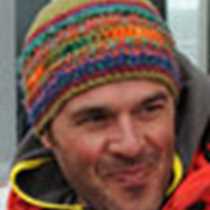Days at sea can be taken a bit as ritual of passage. In this modern age, we are used to getting from one side of the planet to the other in a few hours, and having to spend a couple of days at sea really helps put things into perspective and us in the frame of mind of the early explorers of these latitudes. They left home for a year, perhaps two, and if things went wrong, even more. But they never questioned the length of expedition time—that was what it took to get things done.
Sea time is also the chance to see some of the most amazing creatures we are going to see in this voyage, the seabirds of the Southern Ocean. Seabirds have the most incredible adaptations and actually thrive in conditions that seem impossible to us land-based creatures. In the Southern Ocean they effortlessly cover enormous distances cruising at speeds that may average up to 65 kilometres an hour while seeking food concentrations or escaping storms without wasting any energy. They truly are masters of flight and can adapt the angle of their main flying feathers and their wings to the best use of the available winds. During the day, some 15 different species of albatross and petrels followed our ship, including the wandering albatross, the bird with the largest wingspan in the world (up to 3.6 metres) and one of the smallest seabirds, the gray-backed storm-petrel (about 0.35 metres). The only time these birds may ‘need’ land is for nesting and then, any scrap of rock would serve well as was demonstrated today during our great views of the famous Shag Rocks.
This impressive group of small, vertical, and inaccessible islands lay seemingly out of context in the middle of nowhere halfway between the Falkland Islands and South Georgia. However, they are the tips of something very significant, the southern Andes here breaking to the surface again after disappearing in the southern oceans at the tip of Tierra del Fuego. They form part of what we know as the Scotia Arc, the underwater continuation of this long mountain chain that later on reappears again to show its grandeur resurfacing to form South Georgia, the South Sandwich and South Orkney Islands and the Antarctic Peninsula itself.
Several thousand South Georgia cormorants among a few other species of seabirds manage to nest in these inhospitable rocks and thrive in the exceedingly rich waters that surround them. Hundreds of Antarctic prions and pintado (cape) petrels were also feeding in the upwelling created by the seamount leading to the surfacing of these islands.
After a full day of seabirds, lectures, and environmental and safety briefings, the plan is set for our arrival at South Georgia early in the morning tomorrow. The days to come will certainly be packed so we can make the most of our time in South Georgia, hence the chance for an early night is taken by most.







